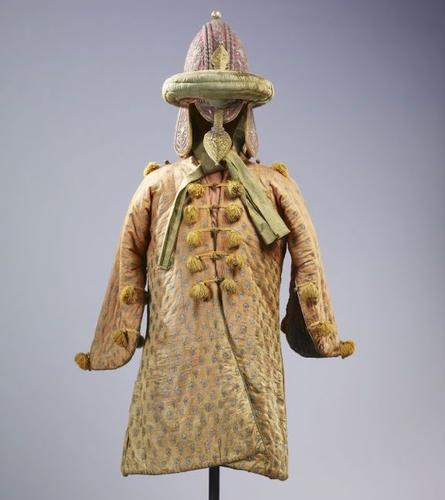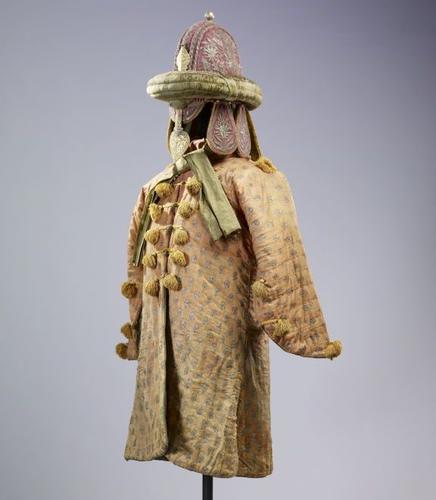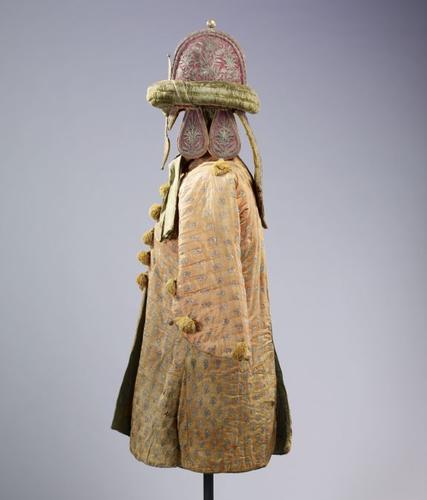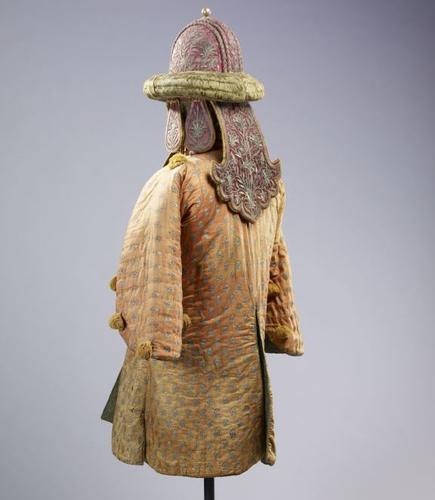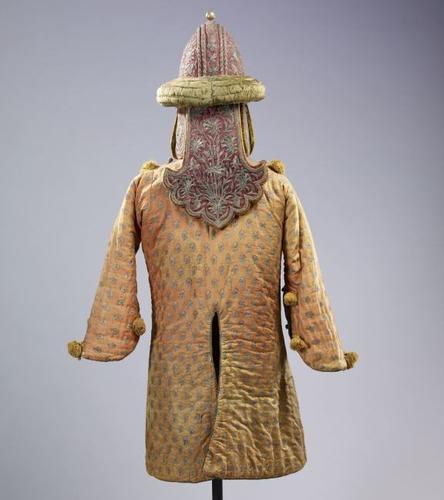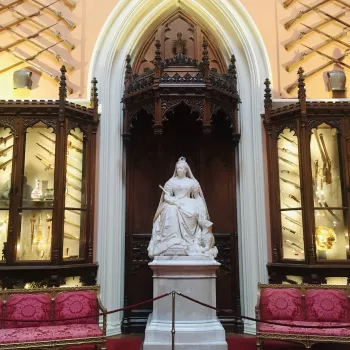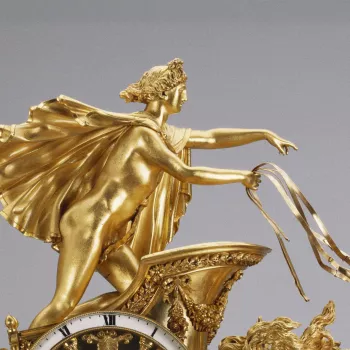War coat of Tipu Sultan 1785-90
Silk, brocade, metal thread | 99.0 x 45.0 x 42.0 cm (whole object) | RCIN 67213
-
Faded pink silk brocaded war coat of Tipu Sultan (1750-99) with stylised white and blue flowering plants; the front with a double row of five orange silk pom-pom tassels; the sleeves with long curved cuffs. Lined with crimson and green silk.
This armour belonged to Tipu Sultan (1750-99), the so-called Tiger of Mysore. Tipu Sultan succeeded as ruler of the South Indian state of Mysore in 1782, where he built a sophisticated and modern court around his palace at Seringapatam. He was described by a contemporary European observer of the war in Mysore: 'His stature was about five feet eight inches; he had a short neck, square shoulders, and was rather corpulent: his limbs were small, particularly his feet and hands; he had large full eyes, small arched eyebrows, and an aquiline nose; his complexion was fair, and the general expression of his countenance, not void of dignity'. Tipu spent much of his reign engaged in hostilities against the British. In 1792 a peace treaty was signed but the discovery of secret communciations with Napoleon brought about a renewed British campaign against him, culminating in the sack of Seringapatam on 4 May 1799. The armour was seized as a trophy of the war. It was presented to the Prince Regent by General Sir John Cradock, in 1811.
Provenance
Belonged to Tipu Sultan of Mysore. Taken at the Siege of Seringapatam in May 1799 and subsequently presented to the Prince Regent (later George IV) by General Sir John Cradock in 1811.
-
Creator(s)
(nationality)Acquirer(s)
-
Medium and techniques
Silk, brocade, metal thread
Measurements
99.0 x 45.0 x 42.0 cm (whole object)
Place of Production
India




